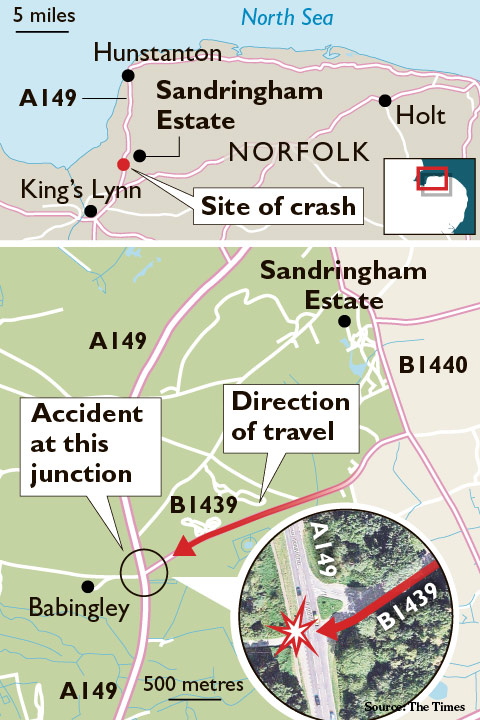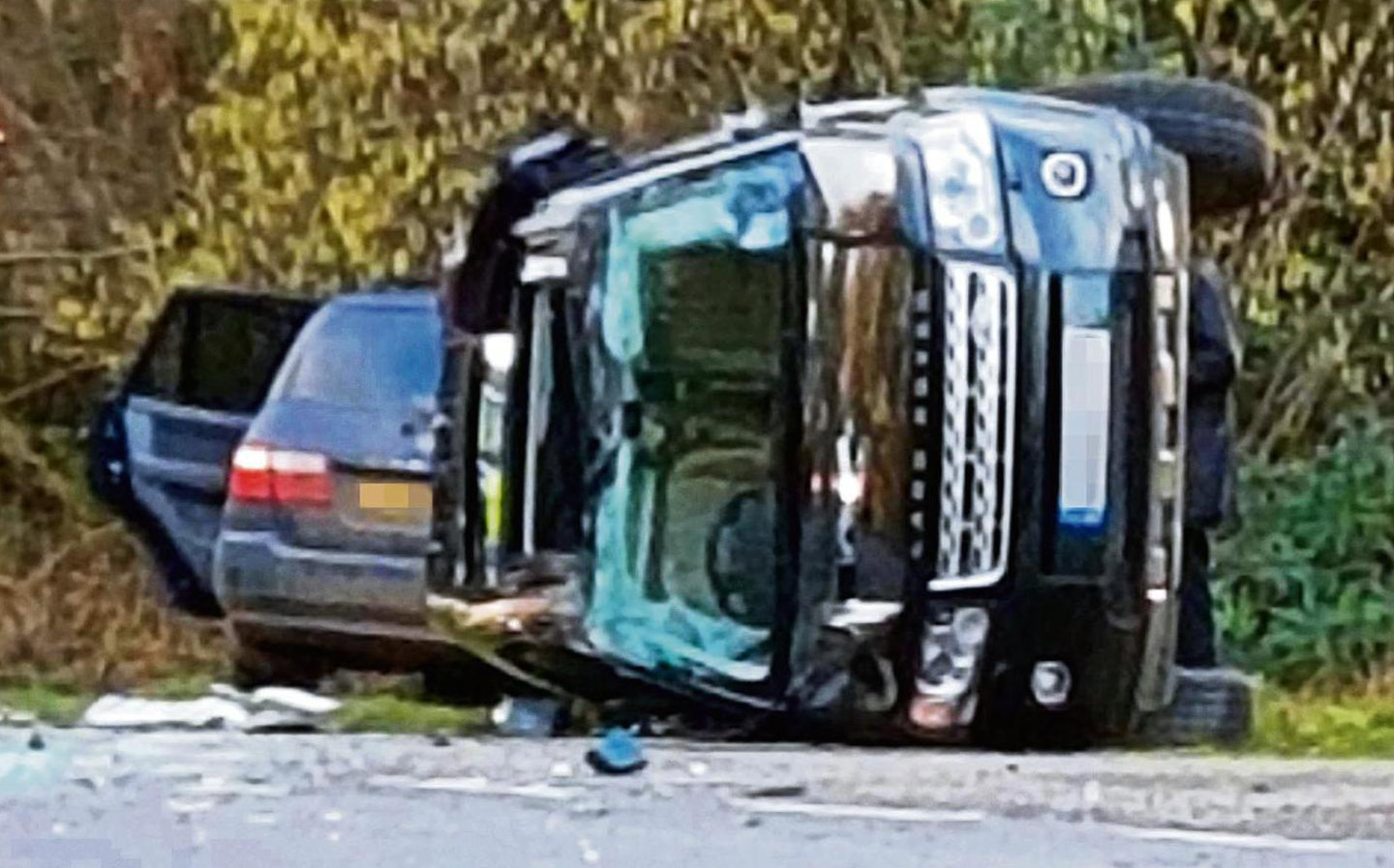Baby rescued from car in Duke of Edinburgh crash
Prince Phillip rolled his Range Rover
A BABY was rescued from a car that was hit by the Duke of Edinburgh’s Land Rover yesterday, it has been revealed.
Roy Warne, 75, told the Radio 4 Today programme that he had been following Prince Phillip’s vehicle near the Sandringham Estate in Norfolk and witnessed the black Freelander rolling across the road at a junction on the A149, also known as Queen Elizabeth Way.
He said he was in no doubt that the second vehicle was hit by the duke’s car, rather than crashing after swerving to avoid it.
Warne said “massive force” must have been involved, given the damaged caused.
Two women were reported to have been in the other car and received “minor injuries”, but Warne told Radio 4 that there was also a baby in the second car.
He said: “The person in the car behind me also stopped and the passenger from that car actually took the baby in his arms, after we’d freed it from the baby harness.”
The duke was uninjured but the two women in the other car were taken to the Queen Elizabeth Hospital in nearby King’s Lynn for checks. One had cuts and the other an arm injury. They were later discharged.
“One I think had a broken arm,” Warne said, “but they were very shaken and one I think was the mother of that child, and was quite upset.”

Prince Phillip, 97, was helped from his car by Warne.
He said: “The roof was where the window should be been, because it was on its side. I think I got him out from either the sunroof or the front windscreen, but I’m a bit a bit blurred about that.”
The duke was examined for abdominal injuries as a precaution but was pronounced fit and was able to communicate with people at the scene, although “there was a little bit of blood”, according to Warne.
“One of the royal entourage gave me a wipe to wipe my hands,” he said, adding that “a lot” of Prince Phillip’s aides arrived at the scene in another car very quickly.
“He was obviously shaken and he then went and asked if everyone else was alright.”
The duke didn’t thank Warne for his help, the good samaritan said, but wasn’t being discourteous. “He had other things on his mind, I’m sure.”
It is likely there will now be a police investigation. Both drivers were breathalysed at the scene — possibly a first for a senior member of the royal family — and both tests proved negative for blood alcohol.
There were already safety concerns over the stretch of road where the incident happened. This evening, by coincidence, Norfolk county council is due to consider plans for new safety measures including an average speed check and cutting the speed limit from 60mph to 50mph.
Also interviewed on the Today programme this morning was Gyles Brandreth, a broadcaster and friend of the royal family, who wrote the duke’s biography.
Brandreth said that he had on occasion been a passenger in the car while the Duke was driving, saying Prince Phillip often drove fast, enjoying the sensation of speed but also the engineering that goes into fast cars.
Brandreth also said that and advice given to the Duke that he should slow down behind the wheel, or stop driving completely, would likely be unwelcome, but suggested it might not prevent him from taking a literal back seat in future, pointing out that he reluctantly gave up flying — another great passion — when asked to do so.
“He’s only 97, after all,” he joked. “Still walking without a stick, still driving, still living his life his way, and that’s important.
“I’m sure this morning, as well as being grateful to have survived, he will be concerned for the other people involved. He will be shaken by this experience. And frustrated that, after 80 years of driving, he is likely now not to be driving outside the private grounds of Sandringham and Windsor Great Park. He’ll no longer be driving on public roads after this.”
Rise of the elderly motorist
Healthier lifestyles and longer life expectancy are resulting in a sharp rise in the number of people remaining on the road as they approach their centenary and beyond, according to the latest figures from the Driver and Vehicle Licensing Agency (DVLA).
As reported in The Times today, 311 people aged 100 or over held a valid licence at the end of last year, up from 264 in 2017 — almost double the number in 2012 — with at least two people aged 107 holding licences.
The trend mirrors changes in demographics over the past decade, with the proportion of the British population aged 90 and over growing more rapidly than other age groups.
However, the increase in older drivers has also brought into question the system used to check people’s fitness to drive. At present drivers who reach 70 must declare whether they are fit to drive every three years but they are not required to undergo a driving test or medical examination. All drivers must meet self-declared eyesight rules — typically reading a numberplate from 20 metres.
Concerns have been raised that some older people are continuing to drive when they are not fit to do so. Last year a coroner said the government should consider compulsory medical checks rather than relying on individual drivers. The comments, in a report to the Department for Transport, were made after Evelyn Fisher, 61, was killed in April 2016 by a driver aged 88 with early signs of dementia.
Image credit: The Mega Agency





